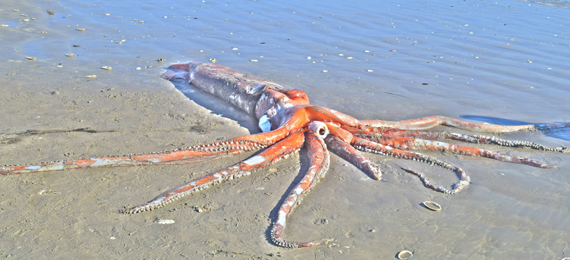
The creature of immense fascination and mystery – the Giant Squid scientifically known as Architeuthis dux, is one of the largest invertebrates on Earth. It resides In the depths of the ocean, where sunlight barely reaches. With eyes the size of dinner plates and tentacles stretching up to 43 feet in length, it embodies the essence of the deep-sea mystery. Despite its colossal size, the Giant Squid has remained largely elusive to human observation, dwelling in the dark abyssal zones of the ocean.
5 List of Giant Squid Species
The five main species typically referred to as giant squids are:
1. Architeuthis dux(Giant Squid)
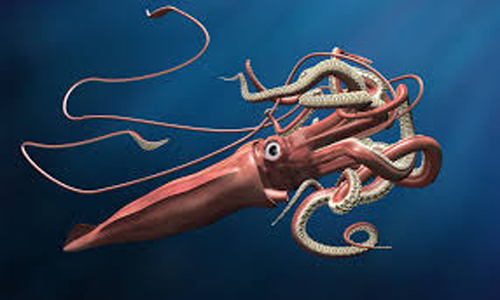
What is the scientific name of the Giant Squid?
- A. Architeuthis martensi
- B. Mesonychoteuthis hamiltoni
- C. Onykia robusta
- D. Architeuthis dux
Architeuthis dux, most commonly known as the giant squid. It is the largest known species of squid and can reach lengths of up to 43 feet (13 meters) for females and 33 feet (10 meters) for males.
2. Architeuthis martensi (Martens’ Giant Squid)
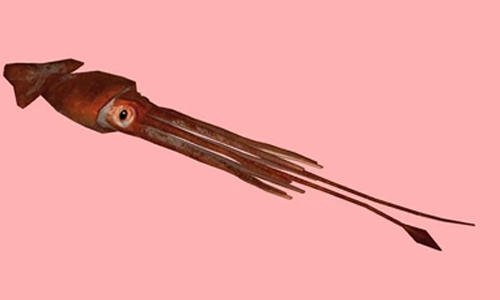
Architeuthis martensi is typically found at depths ranging from 300 to 1,500 meters. It possesses a large mantle, eight arms, and two longer tentacles equipped with powerful suckers. Most of what is known about this species comes from specimens that have washed ashore or been captured in fishing nets.
3. Mesonychoteuthis hamiltoni (Colossal Squid)
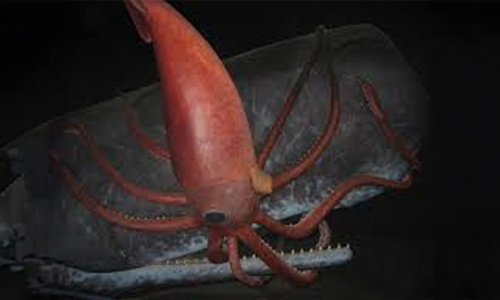
The Mesonychoteuthis hamiltoni, commonly known as the Colossal Squid, inhabits the cold waters of the Southern Ocean, particularly around Antarctica. Colossal Squids can grow up to lengths of around 12-14 meters (39-46 feet) and weigh as much as 500 kilograms (1,100 pounds).
4. Onykia robusta (Robust Clubhook Squid)
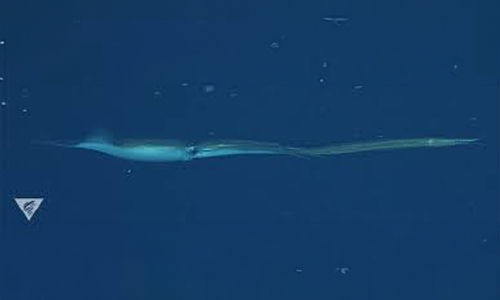
Onykia robusta, commonly known as the Robust Clubhook Squid, belongs to the family Onychoteuthidae. These squids are found in depths ranging from 500 to 2000 meters. They are known for their robust body shape and distinctive club-shaped tentacles, which give them their common name. They can reach lengths of up to 70 centimeters and are typically encountered in waters with temperatures between 2 to 10 degrees Celsius.
5. Moroteuthis ingens (Giant Cranch Squid)
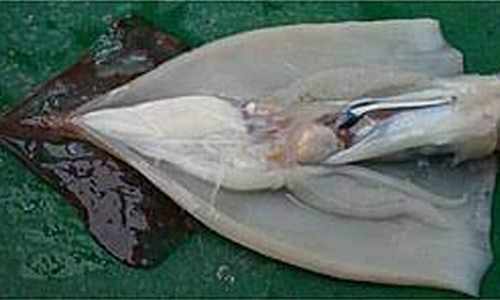
Moroteuthis ingens, commonly known as the giant cranch squid, is a species of deep-sea squid belonging to the family Cranchiidae. This species is reported to reach lengths of up to 7 meters (23 feet) including their long tentacles, typically inhabiting depths of 1,000 to 2,000 meters or more.
Anatomy and Adaptations
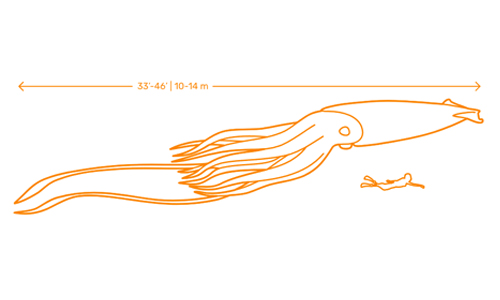
The anatomy of the Giant Squid is a marvel of evolution. Its body is typically reddish-brown or pinkish, with a large, rounded head, eight arms lined with suckers, and equipped with powerful muscles that allow it to move swiftly through the water. The most striking feature is its tentacles, armed with powerful suction cups lined with sharp teeth-like structures, which it uses to grasp and subdue its prey. They have a total of ten appendages: eight arms, two longer tentacles, and three hearts. One of the most fascinating adaptations is its enormous eyes measuring up to 27cm or even larger. These large eyes allow the squid to hunt with precision in the darkness. It has a large brain and a complex nervous system. The research conducted in 2020 on its genome found that it contains around 135 protocadherin genes. They can problem-solve and are capable of opening containers to extract food. Scientists are therefore incredibly interested in studying the ‘intelligence’ of these animals. Their size is estimated to be around 9–10 meters (30–33 feet).
Habitat and Distribution
The Giant Squid inhabits the deep ocean, typically found at depths ranging from 300 to 1000 meters. Its distribution is widespread, spanning all major oceans. As a voracious predator, they prey upon a variety of deep-sea creatures, including fish, crustaceans, and other squid species. Using its powerful tentacles, it ensnares its prey before delivering a lethal bite with its beak-like mouth. Despite its size, it is an agile hunter, capable of pursuing prey with remarkable speed and agility. They possess several tactics aimed at evading predators. They can excrete dark ink to distract prey while they jet away. Much of its reproductive behavior remains a mystery, as few observations of mating and egg-laying have been documented.
Mind-Blowing Facts about the Giant Squid
Their Maximum Length
They are about 43 feet long when measured with their long tentacles and arms that make them so giant.
The Females Outsizes the Male
Females measure approximately 12–13 meters (39–43 feet) and are around twice the size of male squids 10 meters (33 feet) when measured from the posterior fins to the top of the two long tentacles.
Do they Have Three Hearts?
Yes, they have three hearts. A median heart pumps oxygenated blood throughout the body, which it receives from two smaller ones that pump blood through the gills.
When Was the Largest Giant Squid Ever Recorded?
The largest giant squid ever recorded, measuring 43 feet (13 meters) in length and weighing approximately 600 pounds (275 kilograms) In December 2015 by the fishermen near Toyama Bay in Japan.
What Is Its Primary Predator?
The sperm whale is the only identified predator of the giant squid. An estimated 4.3 to 131 million squids get eaten by sperm whales each year.
How long do they live?
Researchers have established that giant squid can live about four to six years old. The longest-lived cephalopod is Graneledone, a deep-sea octopus, They live quite a while based on how long they brood their eggs – 4.5 years!
The Giant Squid stands as a testament to the wonders of the ocean creature. May we continue to explore, discover, and marvel at the wonders of the deep. If you see one, be sure to snap a photo!